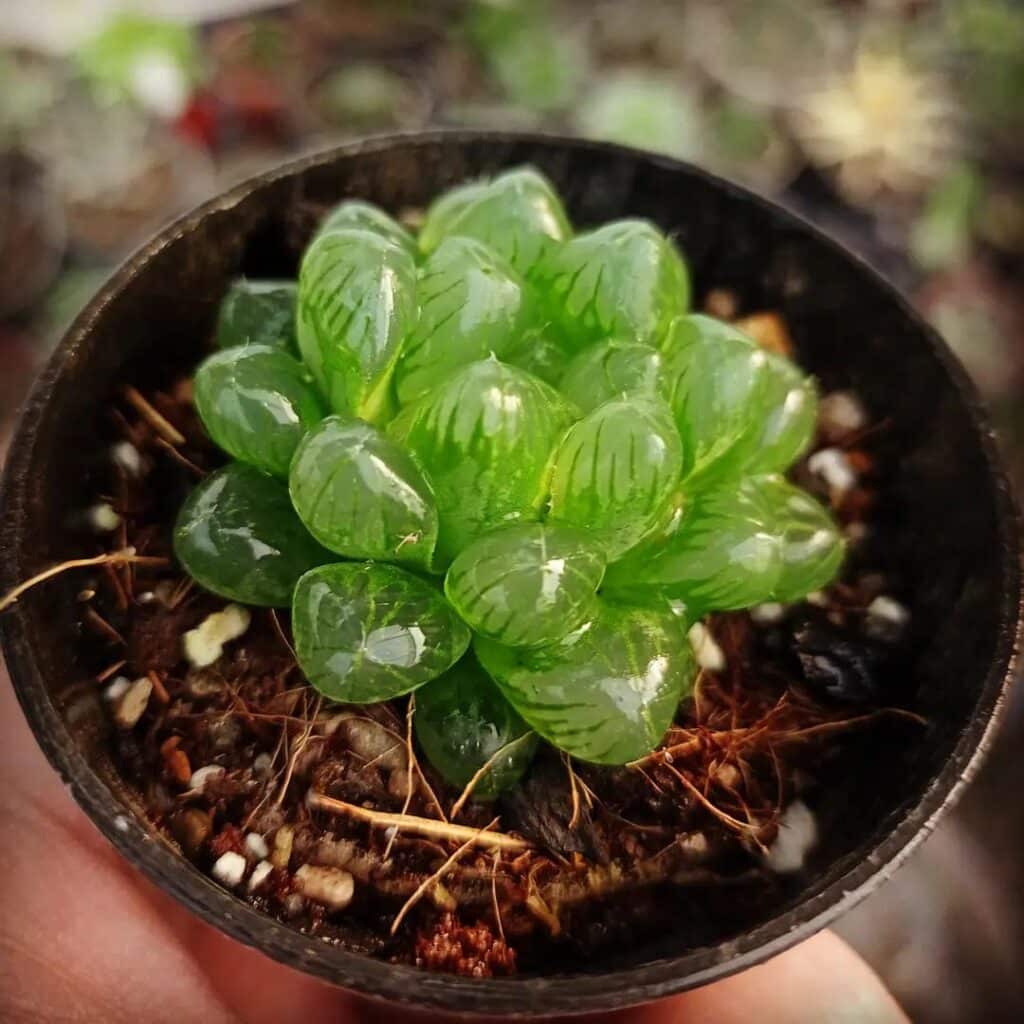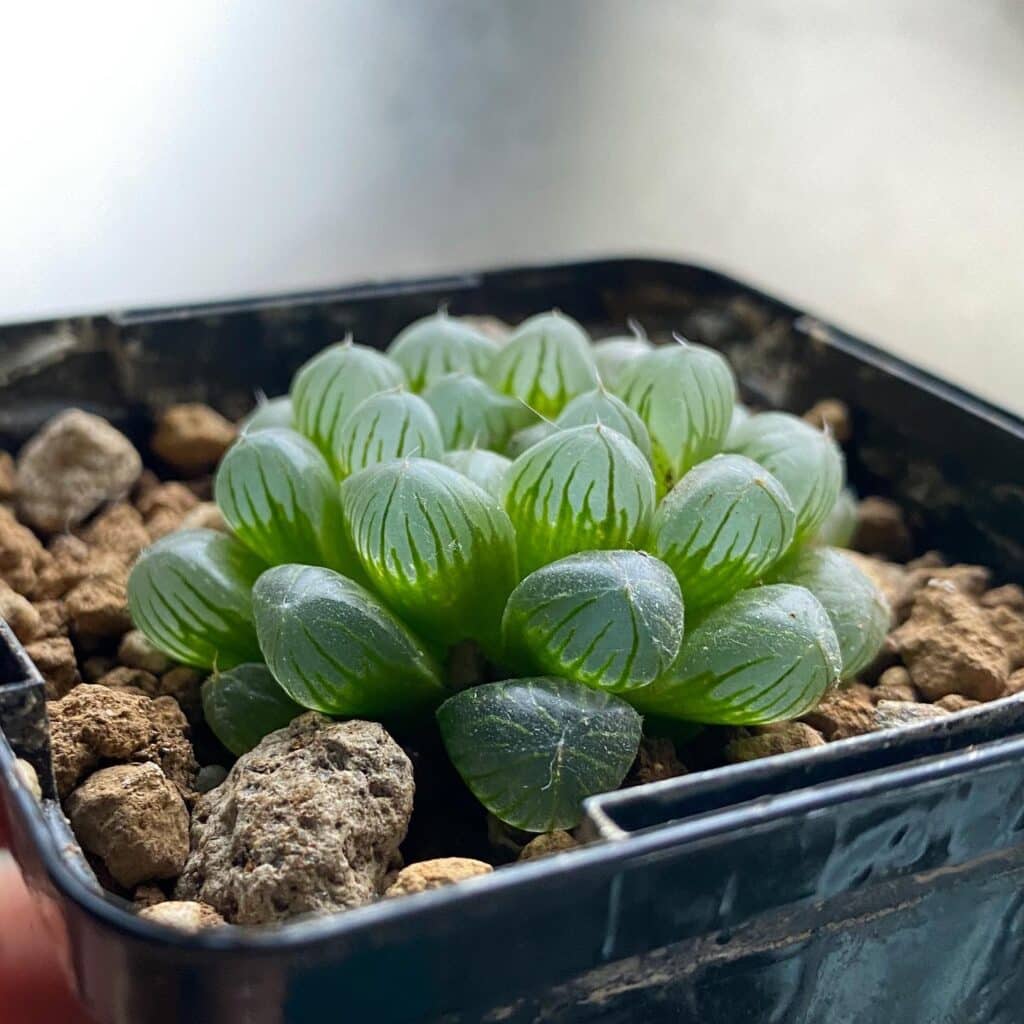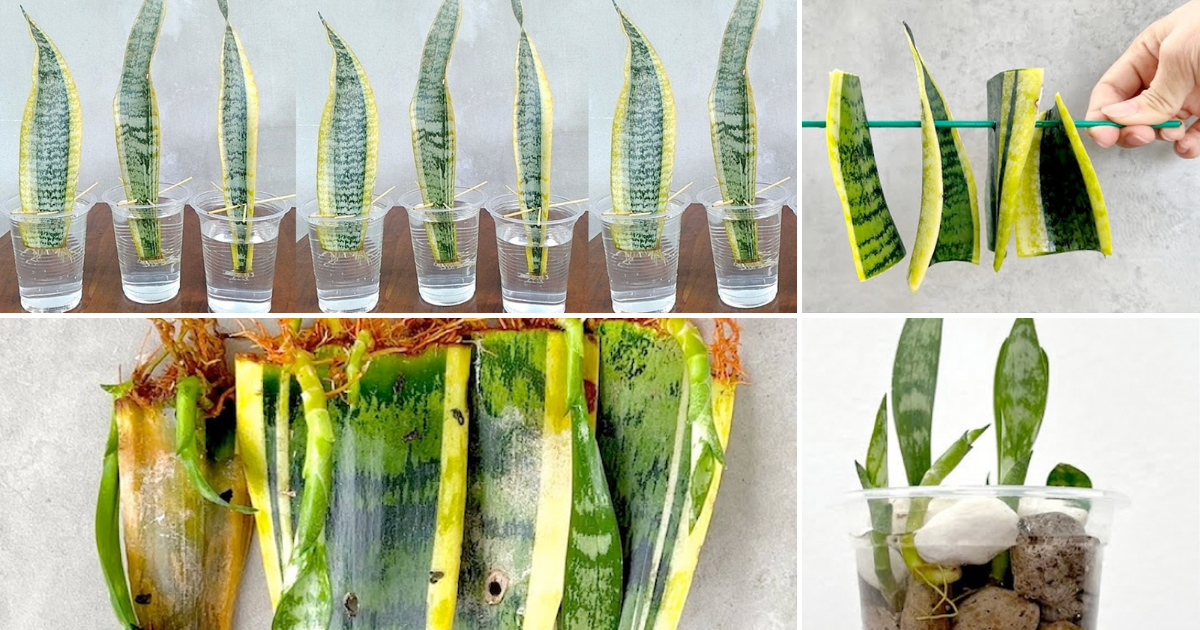
Haworthia Cooperi, a mesmerizing succulent native to South Africa, has garnered attention from plant enthusiasts worldwide. With its unique translucent-patterned leaves resembling tiny clear watermelons or marbles, it’s no wonder this plant is a favorite among many. But how do you ensure this rare gem thrives in your home? Let’s delve into the world of Haworthia Cooperi and uncover the secrets to its optimal care.
- Understanding Haworthia Cooperi
- Growth Rate: How Long Does It Take for Haworthia Cooperi to Grow?
- Light Requirements: Do Haworthias Like Direct Sunlight?
- Watering Needs: Recognizing an Overwatered Haworthia
- Ideal Soil and Fertilization
- Propagation and Repotting
- Pests, Diseases, and Common Problems
- Enhancing Your Collection
- Historical Context
- Benefits of Growing Haworthia Cooperi
- Deep Dive into Care Tips
- Design Tips: Showcasing Your Haworthia Cooperi
- Troubleshooting Common Issues
- Conclusion
- Top 5 FAQs And Answers About How To Grow And Care For Haworthia Cooperi
- Top 10 Interesting Facts About How To Grow And Care For Haworthia Cooperi
Understanding Haworthia Cooperi
Before diving into the care specifics, it’s essential to understand what makes Haworthia Cooperi stand out. Unlike many succulents, Haworthia Cooperi is particularly sensitive to light exposure, thanks to its translucent “glass window” at the top of each leaf. This feature allows light to enter, facilitating photosynthesis, especially considering its native habitat where it often grows mostly underground.
Growth Rate: How Long Does It Take for Haworthia Cooperi to Grow?
One of the most frequently asked questions about this plant is its growth rate. Haworthia Cooperi is a slow-growing succulent. While it might not reach its full height and spread overnight, with the right care, you can expect a steady growth rate, producing small rosettes of fleshy leaves over time. Patience is key when nurturing this plant.
Light Requirements: Do Haworthias Like Direct Sunlight?

Direct sunlight is a tricky subject when it comes to Haworthia Cooperi. While they prefer bright, indirect light, direct sunlight can be detrimental. Too much sun can cause the leaves to fade, turn yellow, or even adopt a reddish tinge. The plant’s unique translucent tips can get sunburned if exposed to harsh sunlight. Therefore, it’s best to place your Haworthia Cooperi in a spot where it receives bright but indirect light, ensuring it gets the illumination it needs without the risk of damage.
Watering Needs: Recognizing an Overwatered Haworthia
Watering is crucial for any plant, but with succulents like Haworthia Cooperi, it’s a delicate balance. An overwatered Haworthia may exhibit signs like yellowing or mushy leaves. Root rot, a common issue stemming from excessive watering, can also set in, jeopardizing the plant’s health. The soil should be allowed to dry out completely between waterings. When in doubt, it’s better to err on the side of underwatering than overwatering.
Ideal Soil and Fertilization
Haworthia Cooperi thrives in well-draining soil. A mix of potting soil, coarse sand, and perlite is often recommended. This ensures the roots don’t sit in water, preventing potential root rot. As for fertilization, while Haworthia Cooperi requires minimal feeding, a balanced succulent fertilizer can boost its growth. Consider using this fertilizer for optimal results.
Propagation and Repotting

Propagation of Haworthia Cooperi can be achieved through leaf or stem cuttings or by separating offsets. When it comes to repotting, remember that they are slow growers and don’t require frequent shifts. However, when you do decide to repot, terracotta pots are ideal due to their breathability.
Pests, Diseases, and Common Problems
While Haworthia Cooperi is generally resistant to pests, it’s not immune. Mealybugs can sometimes pose a problem. Regular checks and early intervention can prevent a full-blown infestation. Overwatering, as mentioned, can lead to root rot, so it’s essential to monitor your watering habits closely.
Enhancing Your Collection
If you’ve successfully cared for Haworthia Cooperi and are looking to expand your succulent collection, consider exploring other succulents that can complement your existing plants.
Haworthia Cooperi: A Jewel from South Africa
Haworthia Cooperi isn’t just another succulent; it’s a testament to nature’s artistry. Originating from the Eastern Cape province of South Africa, this plant has evolved to thrive in challenging environments, making it a resilient choice for indoor gardeners.
Historical Context
The Haworthia genus, named after the British botanist Adrian Hardy Haworth, comprises over 150 species, with Cooperi being one of the most sought-after. Historically, indigenous tribes in South Africa recognized the beauty and resilience of the Haworthias and used them for ornamental and medicinal purposes.
Benefits of Growing Haworthia Cooperi

1. Air Purification: Like many succulents, Haworthia Cooperi contributes to indoor air purification. It absorbs toxins and releases oxygen, promoting a healthier living environment.
2. Therapeutic Presence: The act of caring for plants has therapeutic benefits. The slow growth and unique appearance of Haworthia Cooperi can provide a sense of accomplishment and a focal point for meditation.
3. Low Maintenance: For those with busy lifestyles, Haworthia Cooperi offers beauty without the demand of constant attention.
Deep Dive into Care Tips
Soil Composition: The soil mix isn’t just about drainage; it’s also about providing the right nutrients. Consider adding organic matter or compost to your mix to offer a nutrient boost. This will support the slow but steady growth of the plant.
Watering Technique: Instead of watering from the top, consider the “soak and dry” method. Place the pot in a basin filled with water and allow the plant to soak up moisture from the bottom. This ensures even watering and reduces the risk of water settling at the bottom.
Seasonal Care: While Haworthia Cooperi is adaptable, it responds to seasonal changes. In the growing season (spring and summer), it might require more frequent watering and feeding. In contrast, during the dormant period (fall and winter), reduce watering and skip fertilization.
Light Calibration: If you’re unsure about the light conditions in your home, consider using a light meter. This device can help you determine if your plant is getting the right amount of light, allowing you to adjust its placement accordingly.
Design Tips: Showcasing Your Haworthia Cooperi

Given its unique appearance, Haworthia Cooperi can be a centerpiece in home decor. Here are some design tips:
1. Terrariums: Given its small size and slow growth, Haworthia Cooperi is perfect for terrariums. Pair it with sand, stones, and other succulents for a mini desert landscape.
2. Grouping: While Haworthia Cooperi is a showstopper on its own, it can also be paired with other succulents for a varied texture and color display.
3. Pot Choices: The pot isn’t just functional; it’s part of the presentation. Consider pots with contrasting colors or unique designs to complement the plant’s appearance.
Troubleshooting Common Issues
Beyond the signs of overwatering, it’s essential to be vigilant about other potential issues:
1. Leaf Discoloration: If the leaves turn red or brown, it might be a sign of too much direct sunlight. Conversely, if the plant becomes too leggy or pale, it might be seeking more light.
2. Puckering: If the leaves start to pucker or wrinkle, it’s a sign the plant needs water.
3. Soft Leaves: If the leaves feel soft and squishy, it’s an early sign of rot. Check the roots for any signs of decay.
Conclusion
Haworthia Cooperi is more than a plant; it’s a journey. From its historical roots in South Africa to its place in modern homes, it offers beauty, resilience, and a connection to nature. By understanding its needs and nuances, you can ensure this succulent thrives, bringing joy for years to come.
Top 5 FAQs And Answers About How To Grow And Care For Haworthia Cooperi

Q: How often should I water my Haworthia Cooperi?
A: Water your Haworthia Cooperi every 7-10 days, ensuring the soil dries out completely between waterings. Adjust the frequency based on the season and the environment.
Q: Can Haworthia Cooperi thrive in direct sunlight?
A: No, Haworthia Cooperi prefers bright but indirect light. Direct sunlight can cause the leaves to fade or turn reddish.
Q: What type of soil is best for Haworthia Cooperi?
A: A well-draining soil mix comprising potting soil, coarse sand, and perlite is ideal for Haworthia Cooperi.
Q: How can I propagate Haworthia Cooperi?
A: Haworthia Cooperi can be propagated from leaf or stem cuttings or by separating offsets from the main plant.
Q: What are the signs of an overwatered Haworthia Cooperi?
A: An overwatered Haworthia may show signs like yellowing or mushy leaves. Root rot can also set in if the plant is consistently overwatered.
Top 10 Interesting Facts About How To Grow And Care For Haworthia Cooperi

- Translucent Marvel: The translucent “glass window” at the top of each Haworthia Cooperi leaf is an adaptation to allow light in for photosynthesis, especially in its native habitat where it often grows beneath the soil surface.
- South African Native: Haworthia Cooperi is native to the Eastern Cape province of South Africa, thriving in its unique climate and terrain.
- Medicinal Uses: Historically, indigenous tribes in South Africa used various Haworthia species, including Cooperi, for medicinal purposes.
- Rare Beauty: Among the 150 species in the Haworthia genus, Cooperi stands out as one of the most sought-after due to its unique appearance.
- Temperature Tolerance: While it prefers temperatures between 68 – 72°F, Haworthia Cooperi can tolerate temperatures up to 90°F.
- Humidity Specifics: Unlike many succulents, Haworthia Cooperi prefers humidity levels between 40-50%, making it unique in its care requirements.
- Natural Air Purifier: Like many succulents, Haworthia Cooperi contributes to indoor air purification by absorbing toxins and releasing oxygen.
- Therapeutic Presence: The act of caring for and observing the growth of Haworthia Cooperi can offer therapeutic benefits, promoting mindfulness and relaxation.
- Design Element: Due to its captivating appearance, Haworthia Cooperi is often used as a centerpiece in terrariums and miniature gardens.
- Natural Sunscreen: The reddish tinge that the leaves of Haworthia Cooperi can develop when exposed to too much sunlight is a natural protective mechanism, similar to a “sunscreen,” to prevent damage from UV rays.






